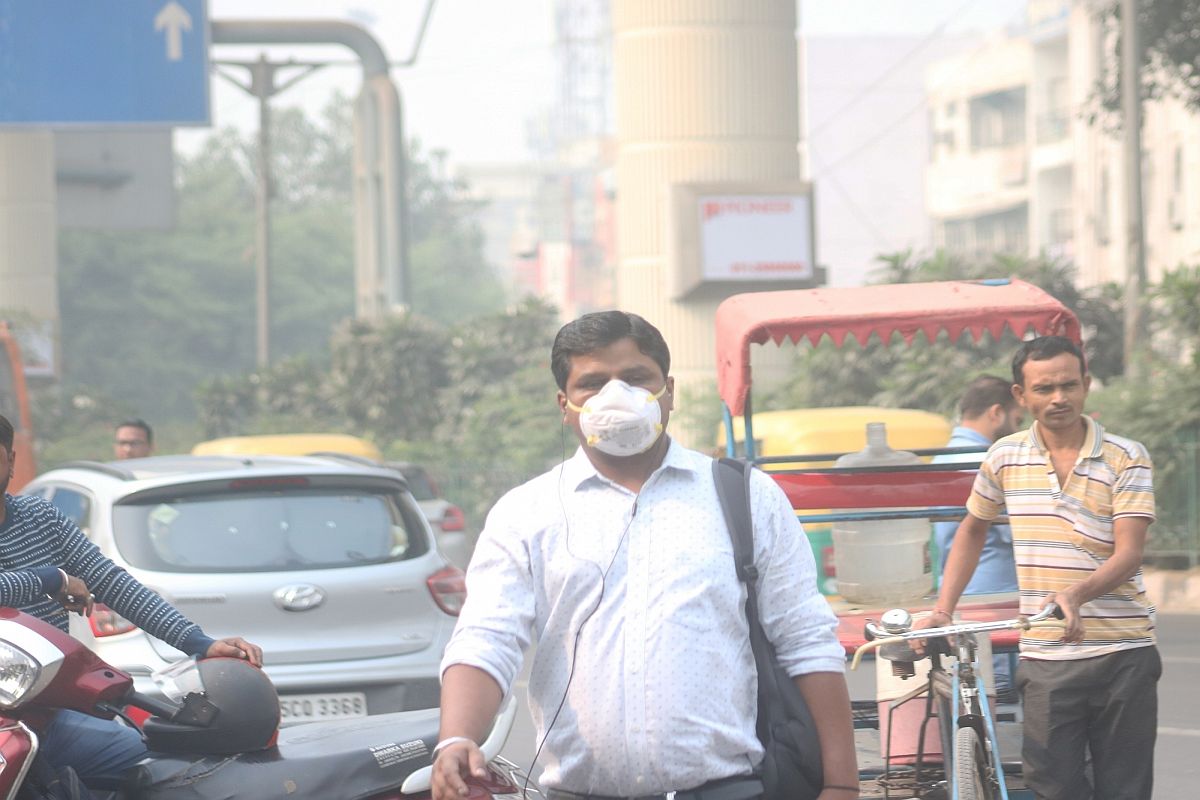The air quality index of Delhi reached “very poor” from “severe” category on Tuesday, thanks to bright sunshine and mild wind. The toxic smog hovering over Delhi started lifting since Monday and on Tuesday morning pollution levels came down considerably after almost a week.
Delhiites grappling with toxic air and smog, breathed a sigh of relief. Policymakers struggling with ways to control this emergency air pollution, though, have a long way to go to fix this every year phenomenon.
According to Safar India (System of Air Quality and Weather Forecasting And Research), under the Ministry of Earth Sciences and Indian Institute of Tropical Meteorology, Pune, the overall air quality index in Delhi has hit 381, much below the 600 plus levels in the last few days.
Even the main pollutants level has dropped. PM 10 is at 307 in the poor category and PM 2.5 at 221 in the very poor category.
Significant improvement in hourly value started on Monday morning as sun rays penetrated; however, the 24 hour running average will come down only slowly.
The AQI reduced magnitude will only be realized by Tuesday to the upper end of “very poor”.
High surface and boundary layer wind are expected for Wednesday as well which will also improve air quality.
A fresh Western Disturbance is approaching north India and scattered rainfall and change in wind direction is expected by November 8 in Delhi region likely to positively influence the Air Quality India.
Over the past few days, a rapid secondary particle built-up along with the lowest mixing layer depth due to high cloud coverer blocking solar radiation had prevented dispersion in spite of not so calm surface winds.
Earlier Safar India said, “SAFAR extended outlook has warned 3 weeks back about the chance of high deterioration in AQI of Delhi during last week of October to the first week of November for prolonged periods mainly due to the delayed withdrawal of monsoon forcing stagnant conditions beneath to arrest any external intrusion for a longer period. This impact appears to be ending now, it said.
In cloudy days like Sunday, in the absence of sufficient solar radiation, the mixed layer continued to be very low even during the daytime, arresting pollutants firmly.
It is a unique condition because such a process is characteristic of the colder foggy period of December-January, the Safar forecast said.
Stubble burning on Sunday had the highest share in terms of the absolute number of PM2.5 of 120. This along with secondary particulate formation due to drizzled calm winds notched the seasons’ high PM2.5 levels to “severe plus”.
The worrisome part is that biomass burning in Punjab and Haryana hit a new peak with a contribution of 44 per cent in air pollution but that is expected to dissipate.
The Environment Pollution (Prevention and Control) Authority had on Friday declared a public health emergency after air quality in the NCR region dipped to 410 on October 31.
Following the declaration, the Delhi government ordered the closure of all schools till November 5, banned construction activity and bursting of crackers during the winter season. The Odd-Even road rationing scheme too kicked off in Delhi-NCR region on Monday.
Chief Minister Arvind Kejriwal has blamed Haryana and Punjab governments for Delhi’s deteriorating air quality. He said that Delhi has turned into a “gas chamber” due to smoke from crop burning in the neighbouring states.
The Supreme Court on Monday rapped the Delhi and Central government for doing nothing to control air pollution.
“The state machinery is not acting… they are passing the buck to each other… Whether the Centre should do or Delhi should do… it can’t go on like this. It’s too much,” a furious top court bench observed.
As construction and demolition works are major contributors to air pollution, the Supreme Court on Monday ordered levy of a fine of Rs one lakh against those involved in such activities and Rs 5,000 against those caught burning garbage in the National Capital Region.
The top court directed that no demolition and construction activities should take place in Delhi and the NCR, and that local administration would be held personally responsible in case of violation.











